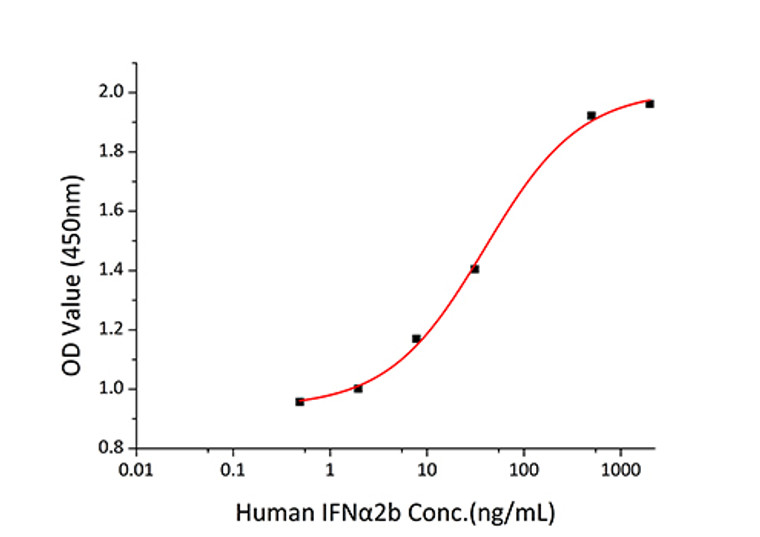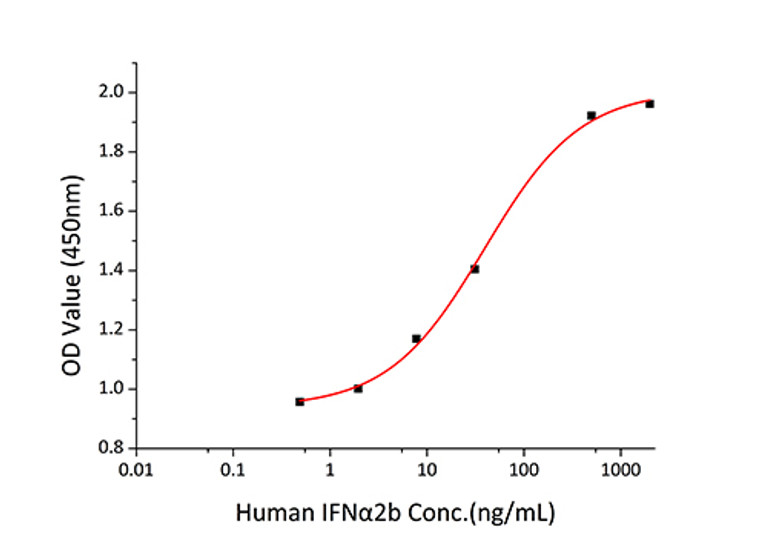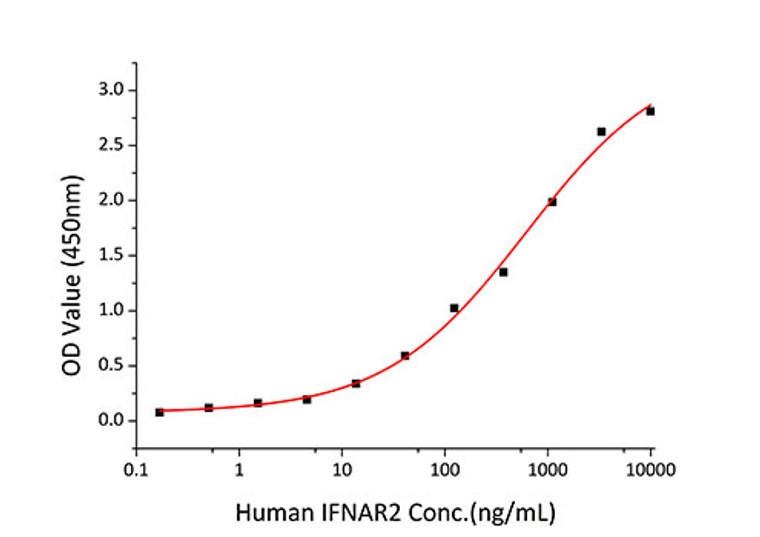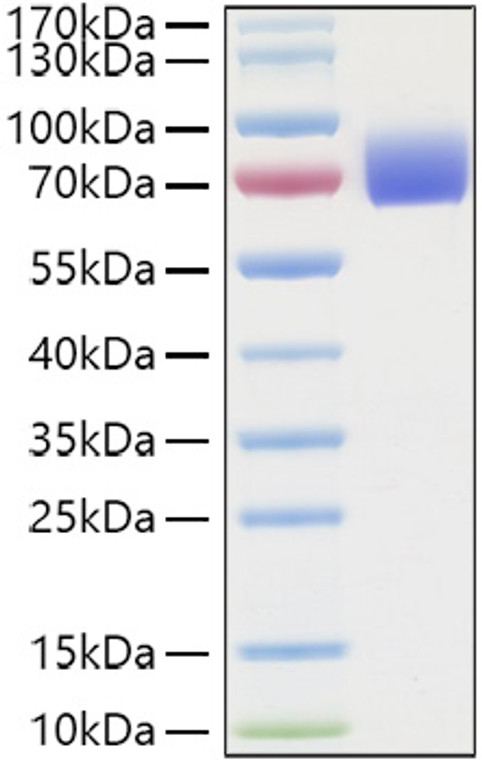| Host: |
HEK293 cells |
| Reactivity: |
Human |
| Note: |
STRICTLY FOR FURTHER SCIENTIFIC RESEARCH USE ONLY (RUO). MUST NOT TO BE USED IN DIAGNOSTIC OR THERAPEUTIC APPLICATIONS. |
| Short Description: |
Active Recombinant-Human IFNAR2-C-hFc&His protein was developed from hek293 cells and has a target region of C-hFc&His. For use in research applications. |
| Formulation: |
Lyophilized from a 0.22 Mu m filtered solution of PBS, pH 7.4. |
| Immunoreactivity: |
Measured by its binding ability in a functional ELISA. Immobilized Human IFNAR2 at 2 Mu g/mL (100 Mu L/well) can bind Mouse IFNAR2 with a linear range of 0.49-39.20 ng/mL. |
| Gene Symbol: |
IFNAR2 |
| Gene ID: |
3455 |
| Uniprot ID: |
INAR2_HUMAN |
| Immunogen Region: |
Ile27-Lys243 |
| Immunogen: |
Recombinant Human IFNAR2 Protein is produced by HEK293 cells expression system. The target protein is expressed with sequence (Ile27-Lys243) of human IFNAR2/IFNARB (Accession #NP_997468.1) fused with Fc, 6×His tag at the C-terminus. |
| Tissue Specificity | Isoform 3 is detected in the urine (at protein level). Expressed in blood cells. Expressed in lymphoblastoid and fibrosarcoma cell lines. |
| Post Translational Modifications | Phosphorylated on tyrosine residues upon interferon binding. Phosphorylation at Tyr-337 or Tyr-512 are sufficient to mediate interferon dependent activation of STAT1, STAT2 and STAT3 leading to antiproliferative effects on many different cell types. Glycosylated. |
| Function | Together with IFNAR1, forms the heterodimeric receptor for type I interferons (including interferons alpha, beta, epsilon, omega and kappa). Type I interferon binding activates the JAK-STAT signaling cascade, resulting in transcriptional activation or repression of interferon-regulated genes that encode the effectors of the interferon response. Mechanistically, type I interferon-binding brings the IFNAR1 and IFNAR2 subunits into close proximity with one another, driving their associated Janus kinases (JAKs) (TYK2 bound to IFNAR1 and JAK1 bound to IFNAR2) to cross-phosphorylate one another. The activated kinases phosphorylate specific tyrosine residues on the intracellular domains of IFNAR1 and IFNAR2, forming docking sites for the STAT transcription factors (STAT1, STAT2 and STAT). STAT proteins are then phosphorylated by the JAKs, promoting their translocation into the nucleus to regulate expression of interferon-regulated genes. Isoform 3: Potent inhibitor of type I IFN receptor activity. |
| Protein Name | Interferon Alpha/Beta Receptor 2Ifn-R-2Ifn-Alpha Binding ProteinIfn-Alpha/Beta Receptor 2Interferon Alpha Binding ProteinType I Interferon Receptor 2 |
| Database Links | Reactome: R-HSA-909733 P48551-2Reactome: R-HSA-912694 P48551-2Reactome: R-HSA-9679191 P48551-2Reactome: R-HSA-9705671 P48551-2 |
| Cellular Localisation | Isoform 1: Cell MembraneSingle-Pass Type I Membrane ProteinIsoform 2: Cell MembraneIsoform 3: Secreted |
| Alternative Protein Names | Interferon Alpha/Beta Receptor 2 proteinIfn-R-2 proteinIfn-Alpha Binding Protein proteinIfn-Alpha/Beta Receptor 2 proteinInterferon Alpha Binding Protein proteinType I Interferon Receptor 2 proteinIFNAR2 proteinIFNABR proteinIFNARB protein |
Information sourced from Uniprot.org
12 months for antibodies. 6 months for ELISA Kits. Please see website T&Cs for further guidance











